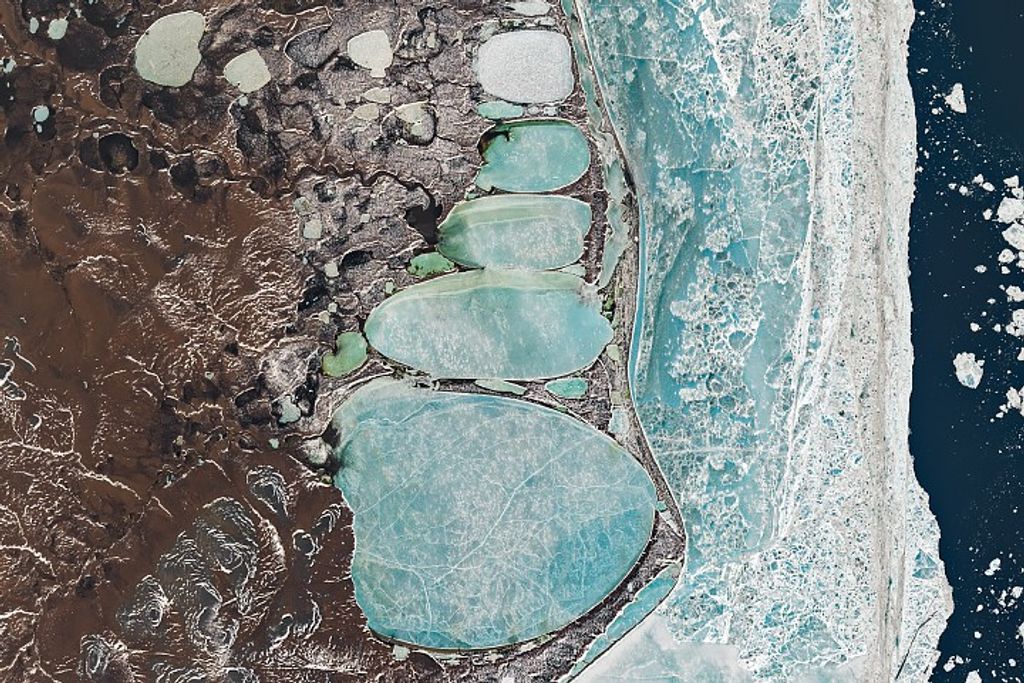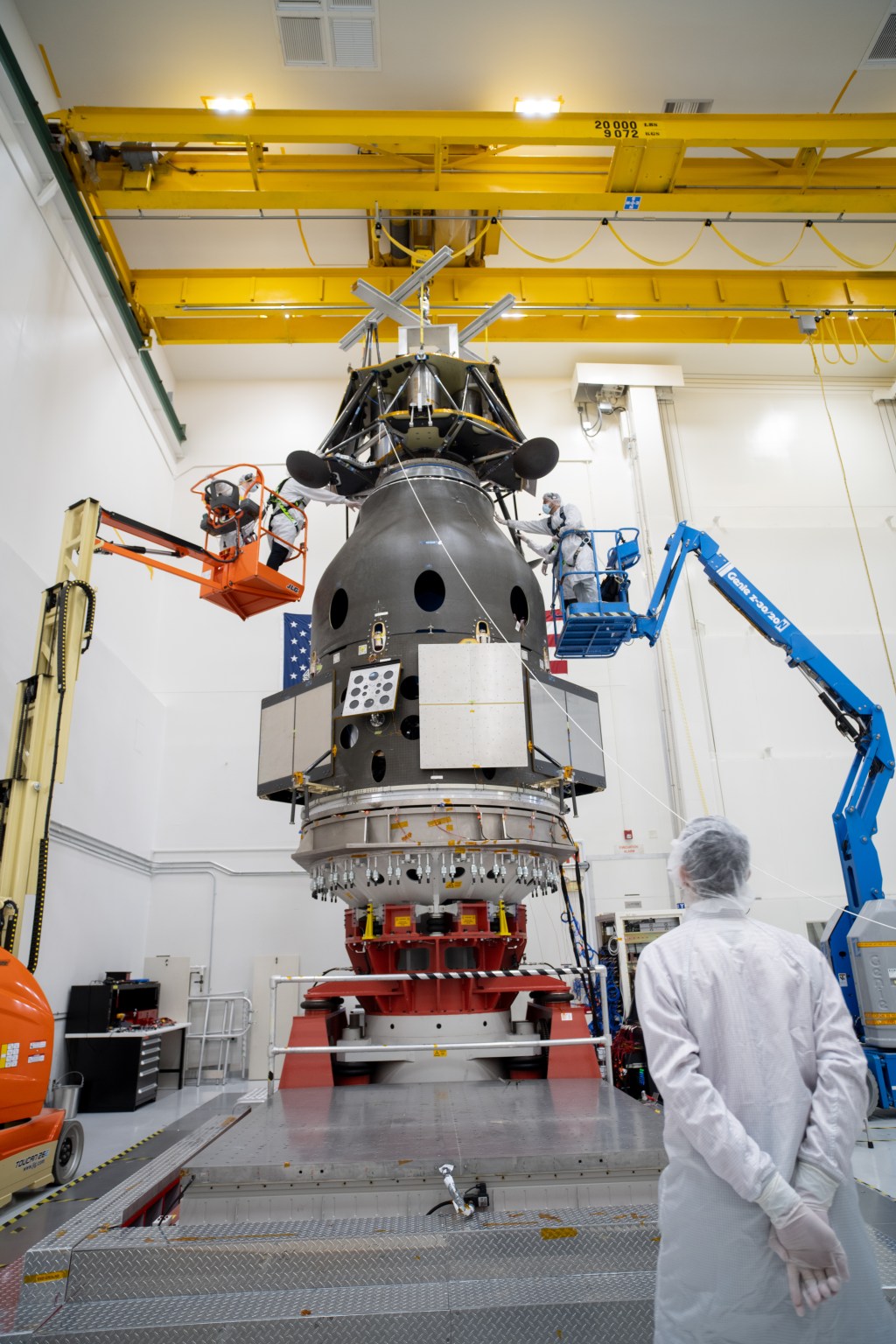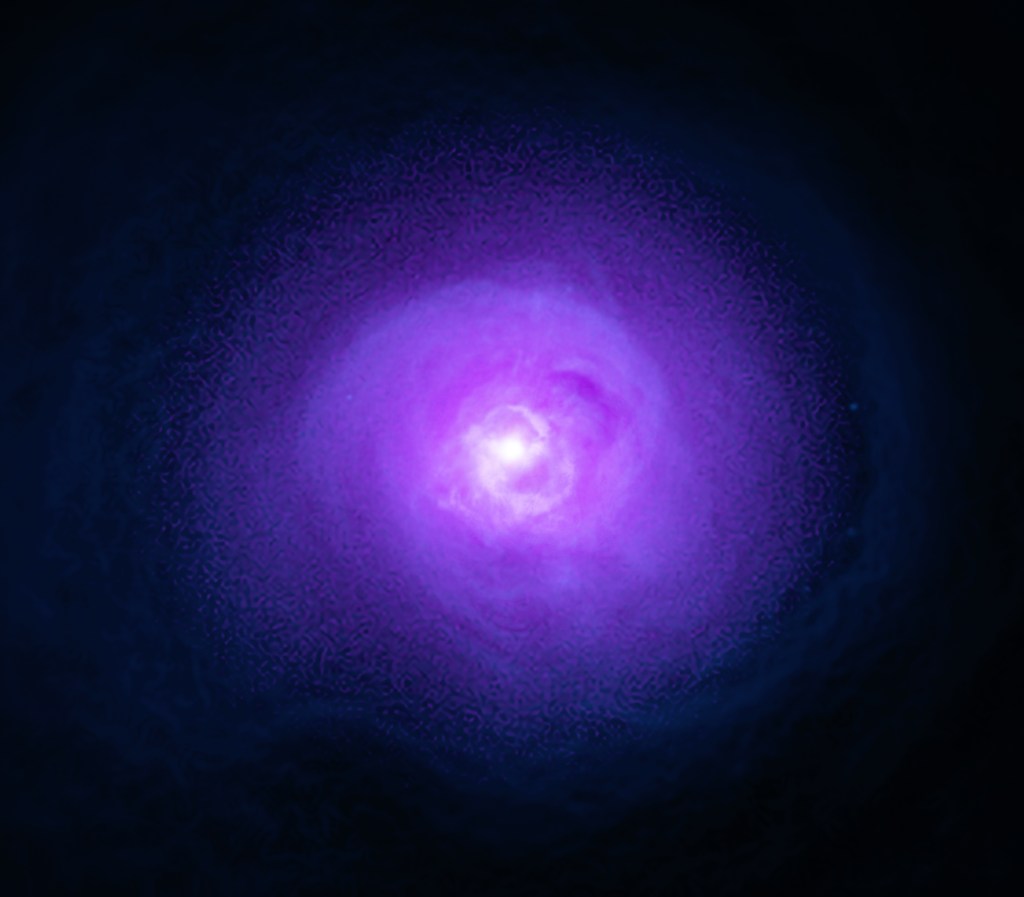1 min read
Webb’s New View of the Pillars of Creation (NIRCam)
This video tours areas of Webb’s near-infrared light view of the Pillars of Creation. This area is brimming with gas and dust – which are essential ingredients for star formation. Glowing, bright red wavy lines appear at the edges of some pillars, revealing where stars are ejecting material as they form. The bright red orbs are newly formed stars that have burst into view.
Distant galaxies typically make appearances in Webb’s images, but not many appear in this one. A translucent layer of gas and dust is drawn like a curtain, allowing the stars to take centerstage. Webb’s near-infrared image will help researchers update their models of star formation. Over time, we’ll learn how stars form and burst out of these dusty clouds over millions of years.
Read more about Webb's near-infrared image of the Pillars of Creation.
- Release DateOctober 19, 2022
- Science ReleaseNASA’s Webb Takes Star-Filled Portrait of Pillars of Creation
- CreditVideo: Danielle Kirshenblat (STScI); Music: Soundstripe Productions; Science: NASA, ESA, CSA, STScI; Image Processing: Joseph DePasquale (STScI), Anton Koekemoer (STScI), Alyssa Pagan (STScI)
Downloads
Related Images & Videos
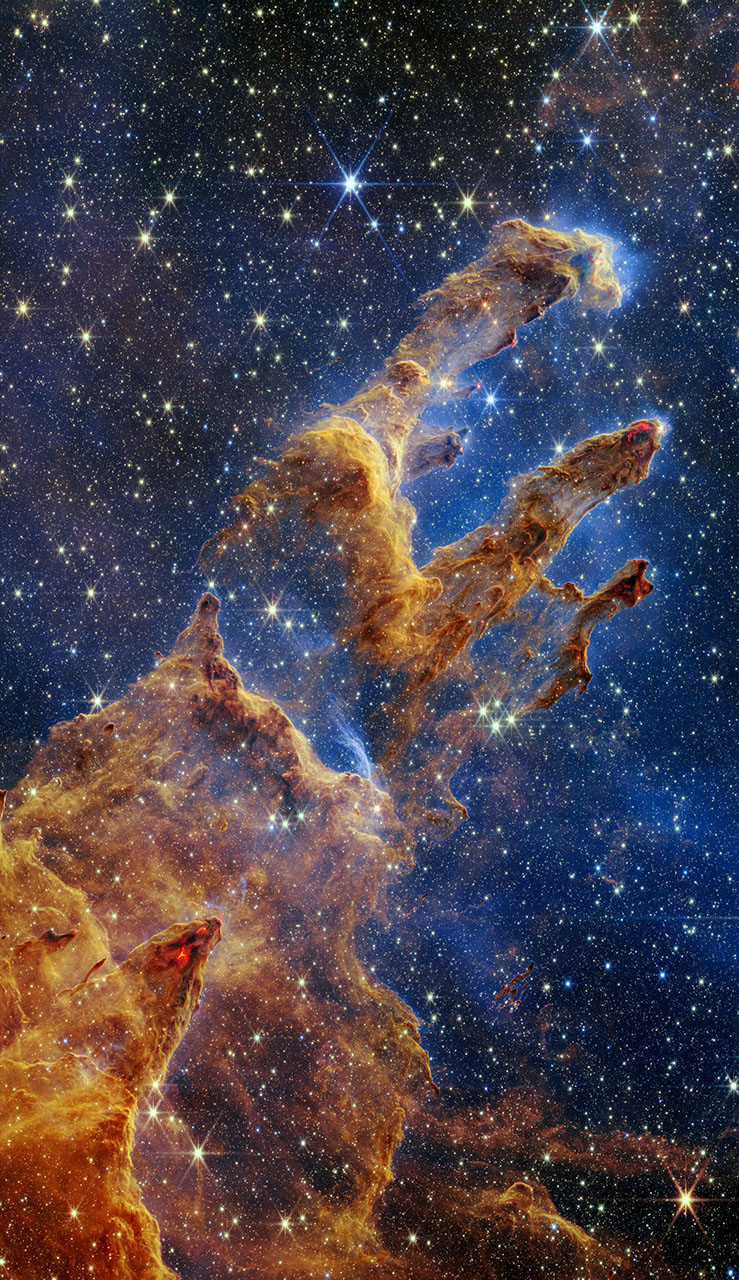
Pillars of Creation (NIRCam Image)
The Pillars of Creation are set off in a kaleidoscope of color in NASA’s James Webb Space Telescope’s near-infrared-light view. The pillars look like arches and spires rising out of a desert landscape, but are filled with semi-transparent gas and dust, and ever changing. This is...
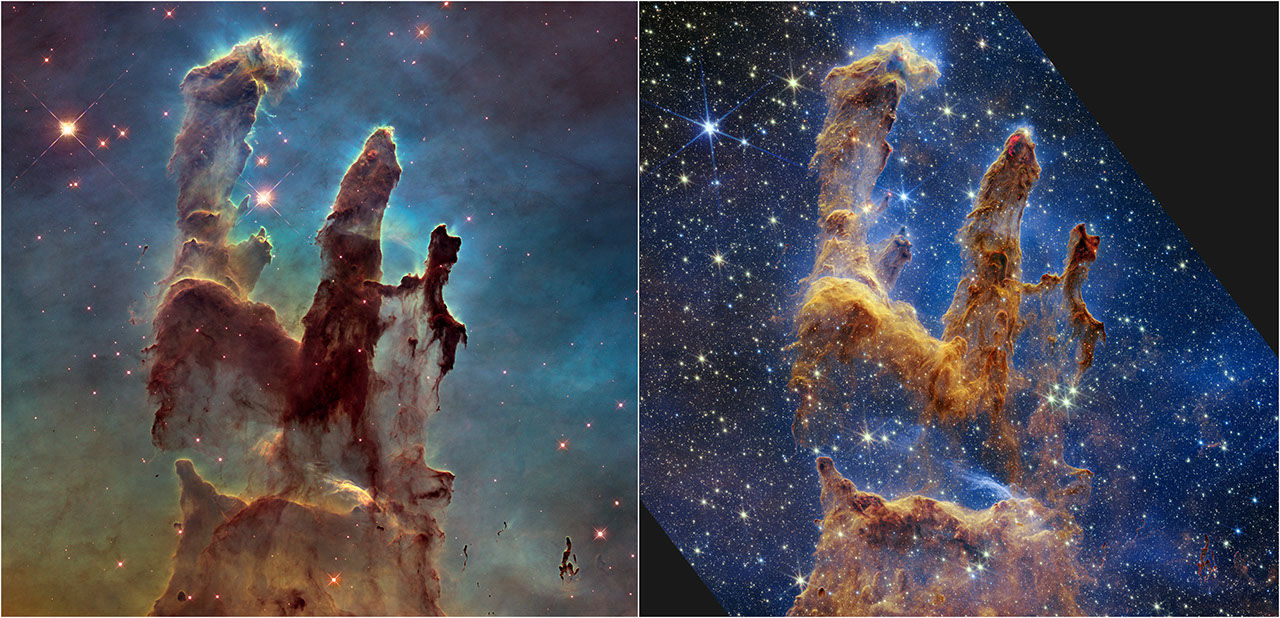
Pillars of Creation (Hubble and Webb Images Side by Side)
NASA's Hubble Space Telescope made the Pillars of Creation famous with its first image in 1995 , but revisited the scene in 2014 to reveal a sharper, wider view in visible light, shown above at left. A new, near-infrared-light view from NASA’s James Webb Space Telescope, at...
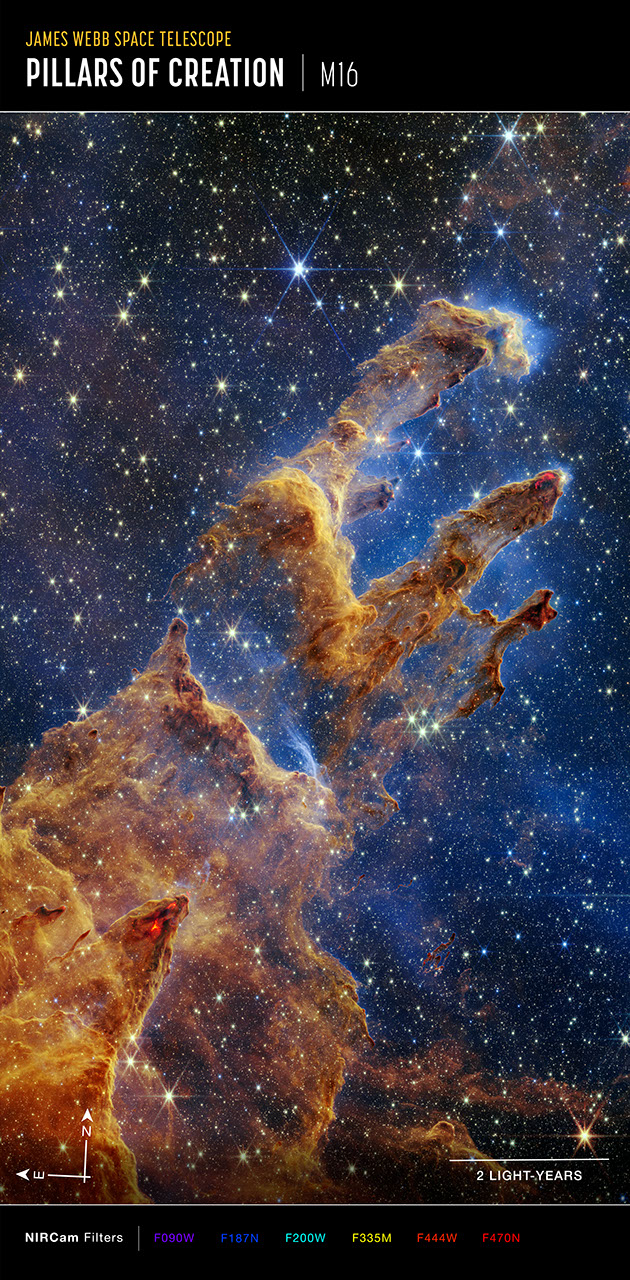
Pillars of Creation (NIRCam Compass Image)
This image of the Pillars of Creation, captured by Webb’s Near-Infrared Camera (NIRCam), shows compass arrows, scale bar, and color key for reference. It lies within the Eagle Nebula, which is also known as Messier 16 (M16). The north and east compass arrows show the orientation...
Share
Details
Laura Betz
NASA’s Goddard Space Flight Center
Greenbelt, Maryland
laura.e.betz@nasa.gov
Danielle Kirshenblat (STScI)
Soundstripe Productions
NASA, ESA, CSA, STScI
Joseph DePasquale (STScI), Anton Koekemoer (STScI), Alyssa Pagan (STScI)









